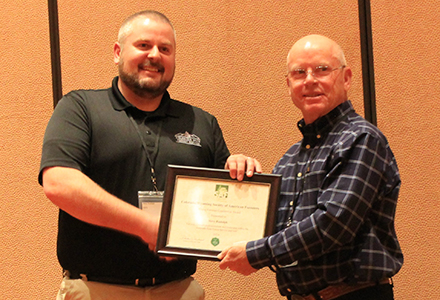
CSFS Staff Recognized for Outstanding Work
The Colorado-Wyoming Society of American Foresters met in Loveland, Colo., on March 21, 2024, and three CSFS employees received awards for their achievements in forestry.
Counties most impacted in southeast Colorado in 2023: Huerfano, Las Animas, Park
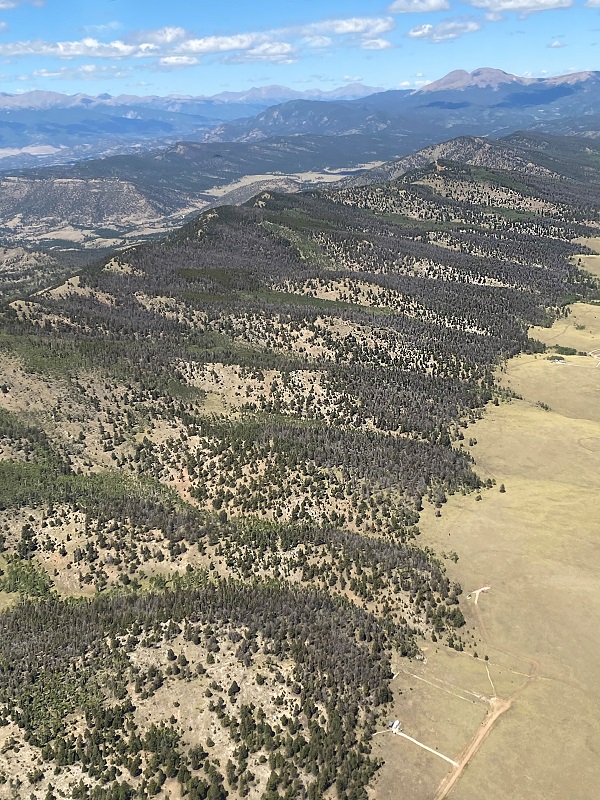
Western spruce budworm (Choristoneura occidentalis) is the most widespread forest pest in Colorado, so unsurprisingly, this insect is a top forest health issue in southeast Colorado. There is still a large population of this caterpillar in high-elevation spruce-fir forests to keep current outbreaks expanding damage and mortality to trees.
This budworm is causing significant mortality in Douglas-fir and spruce-fir forests in the Culebra and Sangre de Cristo mountains and notable damage to forests in the Wet Mountains and southern Front Range and Mosquito Range in Park County.
The western spruce budworm affects Douglas-fir, true fir and spruce trees. Once it partially consumes the needles of trees, the foliage turns a rust/burnt color and trees are at high risk of attack by the deadly Douglas-fir beetle. Budworm outbreaks in this part of Colorado have been prolonged and severe enough that defoliation from the insect kills trees outright, without beetles finishing them off.
Shade-tolerant true fir and Douglas-fir trees can grow densely in a forest’s understory, creating optimal conditions for western spruce budworm. Forest management projects that clear the understory and reduce wildfire fuels can curb budworm activity. Even removing small spruce and fir for Christmas trees and boughs can alter the structure of a stand and reduce susceptibility to budworm outbreaks.
Counties most impacted in southeast Colorado in 2023: El Paso, Park, Teller
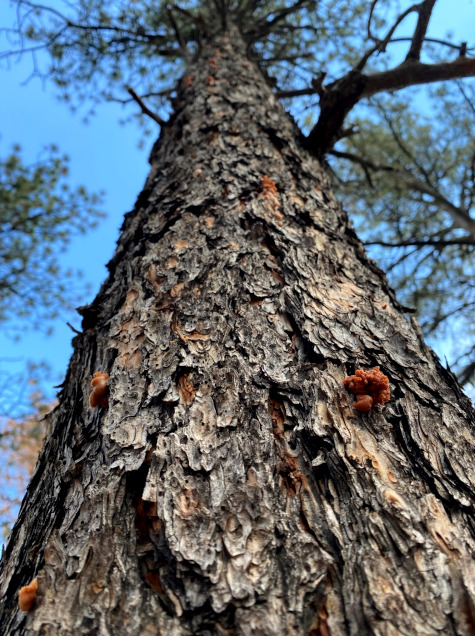
Mountain pine beetle (Dendroctonus ponderosae) continues to attack and kill pine trees at high levels in northern El Paso County, primarily along the margins of the 2013 Black Forest Fire. This native bark beetle started building populations again in drought years following the fire. Many trees became susceptible to attack even though they survived the fire because they had significant fire damage and were then stressed from below-average precipitation. These damaged and water-stressed trees are more susceptible to attack by bark beetles.
Stressors such as dwarf mistletoe and localized hail damage can also make trees prone to attack. Localized storms damaged and increased tree susceptibility in the Black Forest in July 2023.
Along with the Black Forest, small pockets of mountain pine beetle are also popping up in Teller and Park counties in southeast Colorado. While mountain pine beetles attack a variety of pine species, they are primarily impacting ponderosa pine in El Paso and Teller counties. Limber pine, a five-needle higher-elevation species, is the dominant tree species affected in Park County.
Colorado State Forest Service foresters are helping landowners identify infested trees and providing management options to curb the spread of this beetle. Removing infested trees before the beetles take flight in the summer is an effective means to curb their spread. On a local scale, insecticide sprays and semiochemical treatments can prevent trees from being attacked.
Counties most impacted in southeast Colorado in 2023: Custer, Fremont, Huerfano, Las Animas, Pueblo
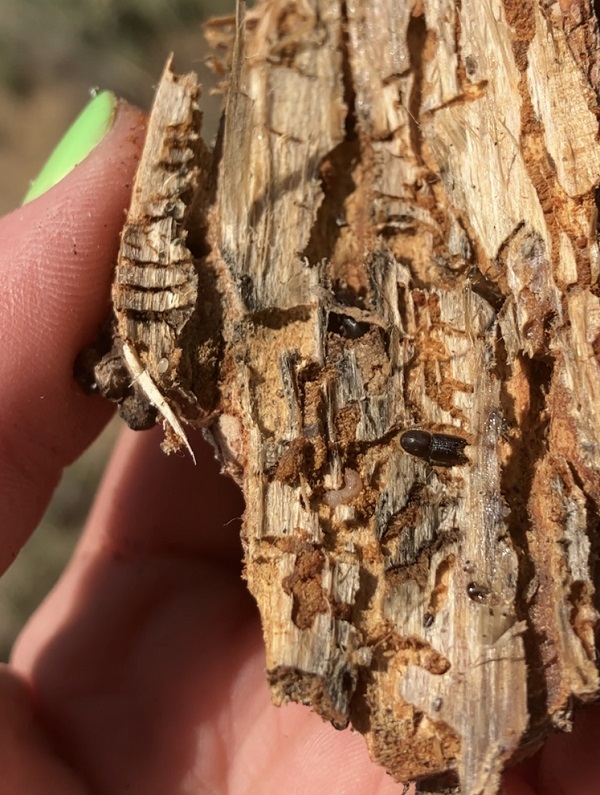
The piñon Ips beetle (Ips confusus) is an opportunistic insect, attacking trees in poor health, so dense forests and drought stress continue to provide ideal conditions for this forest pest to build populations throughout Colorado, including in the southeast.
This beetle is the primary insect of concern in counties served by the Colorado State Forest Service’s Cañon City Field Office, including Custer, Fremont and Pueblo. Piñon Ips beetle is also active in central Huerfano County north of Highway 160, an area served by the CSFS La Veta Field Office, and piñon-juniper stands in the northern Culebra and southern Sangre de Cristo mountains.
Damage to piñon trees from fire or mechanical means releases tree resin with compounds that attract the beetle. If cutting piñon trees, it is important to properly remove the wood and slash, since fresh-cut wood is a preferred breeding ground for Ips beetles. Preventive sprays and supplemental watering during periods of drought can help protect high-value landscape trees.
Learn more ways to manage for this insect in the Piñon Ips Bark Beetle Quick Guide.
Counties most impacted in southeast Colorado in 2023: widespread
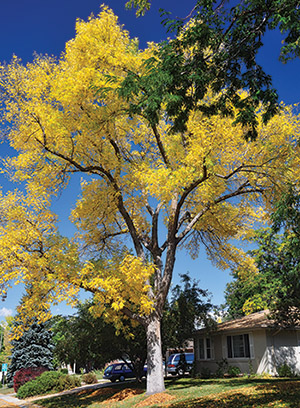
Recently, foresters in the Colorado State Forest Service’s Cañon City Field Office detected ash bark beetle (Hylesinus spp.) in an ash tree. This is not cause for concern. Ash bark beetles are common and not a serious threat to healthy ash trees. Their impact is primarily aesthetic. Infested branches die and can make an ash tree look unsightly, or a dead branch could fall and hit a potential target.
The larger concern is that many ash trees in southeast Colorado and across the state are stressed by drought and susceptible to insect invaders. This means homeowners may see ash trees declining in health, detect insect-related damage to their ash trees or find larvae in them, and mistake ash bark beetle for another insect that seriously threatens ash trees.
The emerald ash borer (Agrilus planipennis) is a major killer of ash trees and is moving its way south along the Front Range from the epicenter where it was first discovered in Boulder County in 2013. Last year, EAB was detected in Littleton, the southern-most known detection of EAB in Colorado, so it is still a ways off from naturally spreading to communities in southeast Colorado. It can spread through infested firewood, which is likely how EAB popped up in Carbondale in 2023.
If you suspect your ash tree is infested with an insect and the tree shows the signs of EAB, contact your local CSFS office, CSU Extension office or your city’s forestry department.

The Colorado-Wyoming Society of American Foresters met in Loveland, Colo., on March 21, 2024, and three CSFS employees received awards for their achievements in forestry.
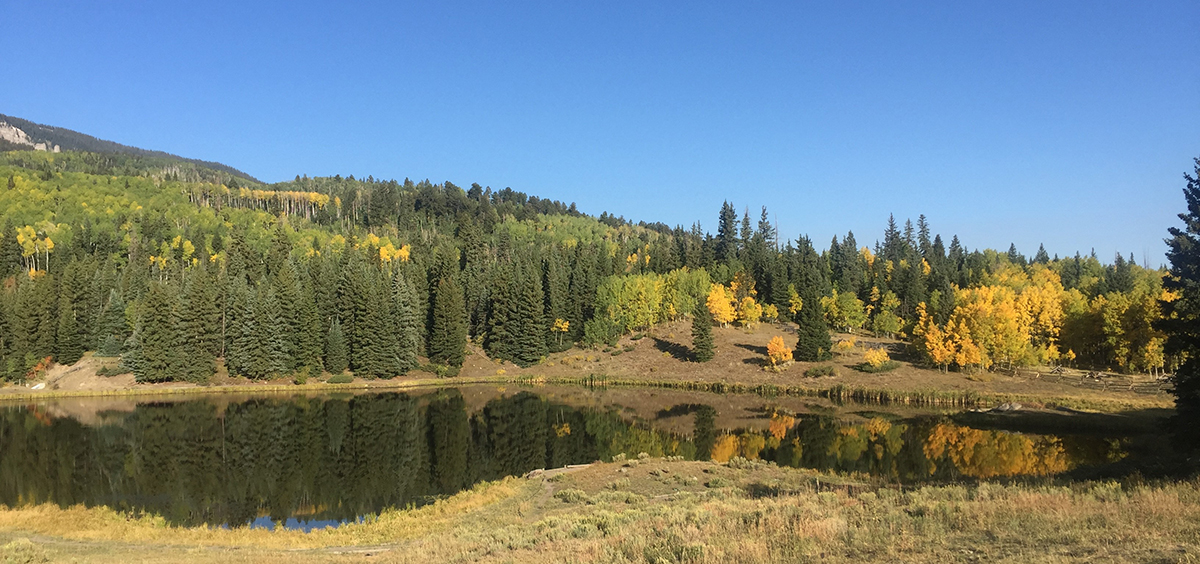
CSFS foresters spend a lot of time in Colorado’s forests, so they’re the best sources for insider tips on where to view fall colors. See if you agree with their suggestions!
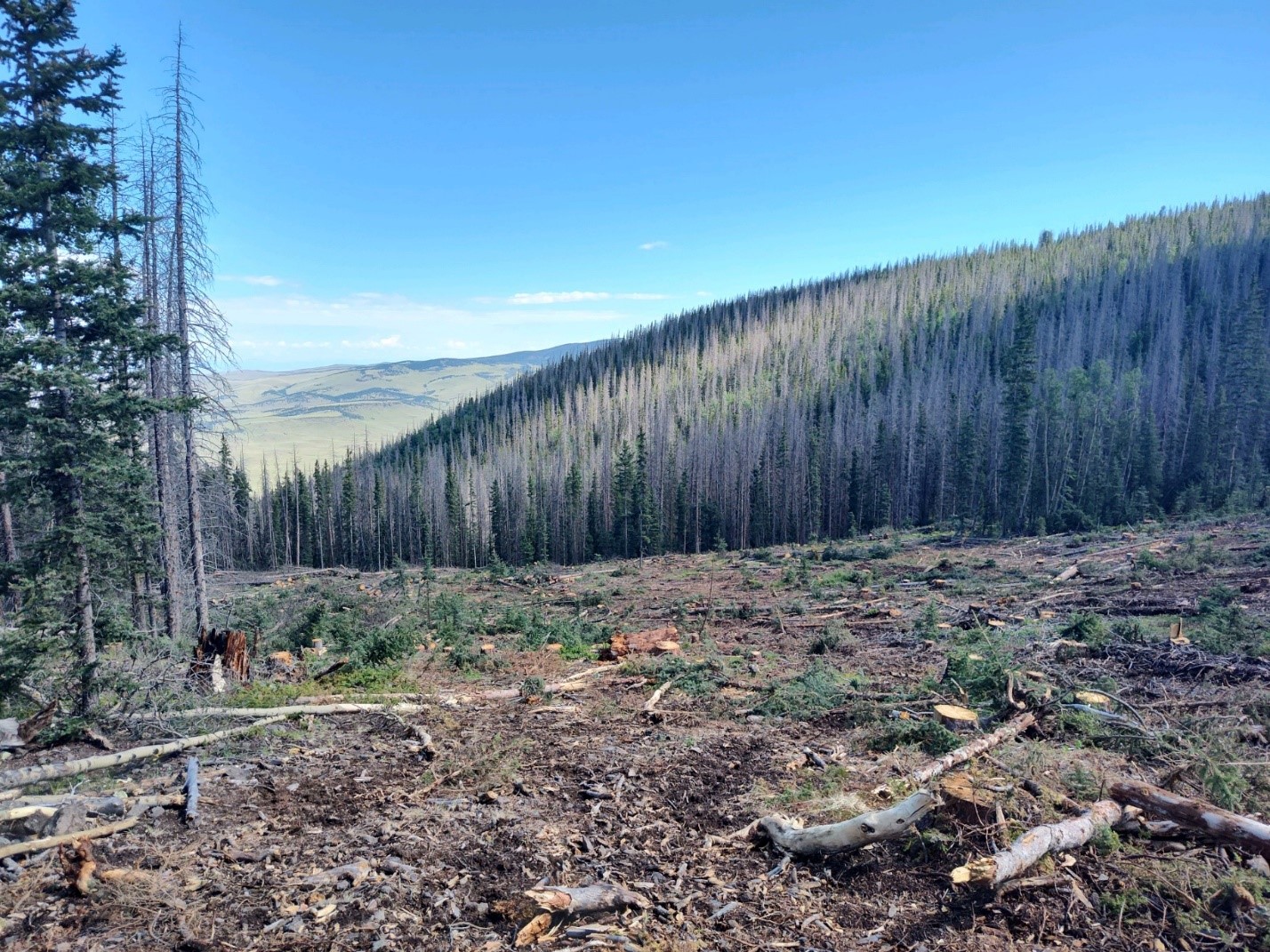
Foresters from the CSFS and the Bureau of Land Management collaborated on a plan to reduce wildfire risk for Waugh Mountain in northwestern Fremont County.